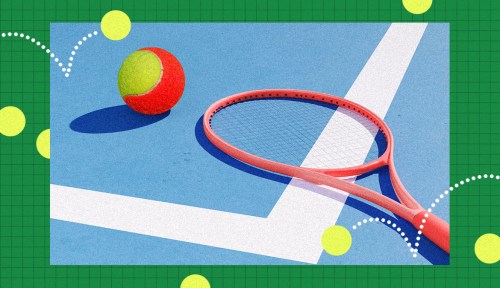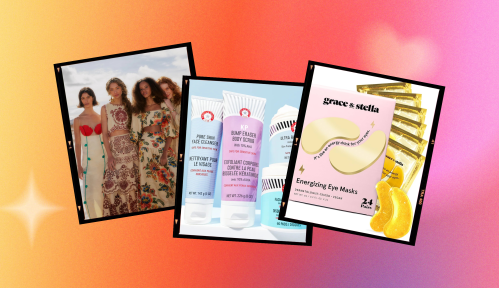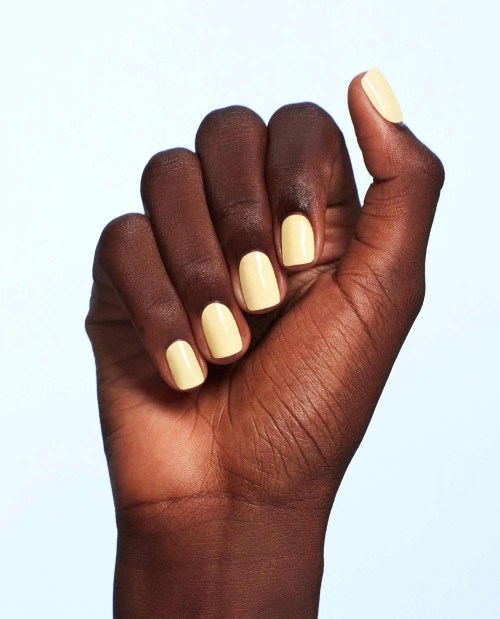Our editors independently select these products. Making a purchase through our links may earn Well+Good a commission
The iconic neon color of tennis balls embodies the image of the sport: it’s flashy, bouncy, and can soar across the court. But it turns out that there are other colors meant for different levels of play—and if you’re wanting to get in on one of the best sports for longevity, picking up different tennis ball colors may be the best hack to get you started.
Experts in This Article
president of the United States Tennis Association (USTA) and chairman of the board
North American business manager for HEAD Penn Racquet Sports and former tennis pro shop owner
What color are tennis balls, anyway? They come in a lot of hues (more on that below), but that bright orb bouncing from one side of the net to the other during pro games is a standard mandated by the International Tennis Federation (ITF).
“The industry standard color [of tennis balls] is called Optic Yellow,” says Dave Limke, a representative from HEAD Penn Racquet Sports, which makes balls, racquets, and other equipment. “Every brand is probably slightly different, but they’ve all got to be approved ultimately by the ITF.”
But Optic Yellow balls—which have a standard size, amount of compression (which impacts how bouncy they are and how far they can fly), and are meant to be played on full size tennis courts—aren’t the only option. If you are a tennis beginner, you might want to check out playing tennis with red balls (also called stage 3 balls).
What is “red ball tennis”?
Red ball tennis differs from full-blown tennis in a few ways. First of all, the ball is bigger (and, for the record, not red all-around; it’s usually half-red, half-yellow, or yellow with a red dot). The bigger ball equals a bigger, easier to hit target!
Next, it has less compression than a yellow ball, which means it will not bounce or fly as far.
You hit a red tennis ball with a shorter racket, too. This makes striking the ball easier to control.
And finally, the court is different. The net should be lower, and it’s played on a 36 foot court. You can either play just in the service box of a regular tennis court, or on a pickleball court.
“You’ve got a ball that doesn’t fly as fast or as far, and then you’ve got a racket that’s easier to swing, easier to maneuver,” Limke says. “The size of the court makes it a little more cozy and a little easier to keep a point going where you’re not running all over the place. So it’s just a more controlled experience.”

Penn QST 36 Tennis Balls — $5.79
Getting into tennis can be easy as playing with red, or stage 3, balls. These from Penn are tried and true for getting the feeling of the sport.
Who is red ball tennis for?
Red ball tennis was originally introduced as a learning method for children under 10, but it’s truly for anyone who wants to pick up a tennis racket.
“The myth of tennis is that you must start on a traditional court with a yellow ball.”—Brian Hainline, president of USTA
“Red ball tennis is perfect for any person, of any age, who is a beginner tennis player,” says Brian Hainline, MD, president of the United States Tennis Association (USTA) and chairman of the board. “The myth of tennis is that you must start on a traditional court with a yellow ball, [but] all beginner tennis players should begin with a red ball on a shorter court. Anyone, of any age, should begin this way—and that makes tennis incredibly approachable.”
Dr. Hainline emphasizes that red ball tennis should be for all ages because, he says, it’s an effective learning technique to level up in the game for everyone. Tennis can feel like it’s tough to get into, but red ball tennis is an easier entry point to pick up on its own.
“The barrier to entry [in red ball tennis] is a little lower than it would be for regular tennis,” Limke says. “I mean, tennis is hard. There is definitely a learning curve there.”
That can make having fun as a beginner in tennis a little harder, too. While tennis took off during the pandemic, so did pickleball, in large part because pickleball is so simple to pick up. But the specifics of red ball tennis make it easier to get a good rally going even if you just started playing.
“It is a softer, gentler way of beginning tennis on a short court, with a smoothness and quietness and gentle movement that you do not get with pickleball,” Dr. Hainline says. “Be energized about playing the game and don’t feel embarrassed that you are starting on a shorter court with a red ball. Just try it and you will be amazed how accessible the game can be.”
What other tennis ball colors mean
Red isn’t the only color made with beginners in mind. The ITF approves a few other colors of tennis balls for people just getting into the sport. And remember: most of the options you’ll find aren’t an all-over color.
Orange tennis balls
Also called stage 2, orange tennis balls were developed to be one step up from red. They’re still larger than a regular tennis ball and designed for use on a 60-foot court, with about half as much compression as a standard ball (so they still don’t bounce as high). Once red ball tennis starts to feel comfortable, consider leveling up to orange.

Wilson US Open Orange Tennis Balls — $3.98
Green tennis balls
Green balls are stage 1 balls. According to the ITF, the intention is for players to progress from using stage 3 (red) balls to stage 1 (green), and then on to the standard ball. These are the last level of beginner-specific tennis ball—if red balls feel not quite right, you can always start with these instead.

Dunlop Stage 1 Green — $9.95
Even more colors
Of course, you can buy tennis balls in pretty much any color you can imagine (Supreme and Wilson had a collab of white balls; rainbow tennis balls abound online.) But none of those are ITF-approved, and you may or may not get the correct size or level of compression for your level of play.
If you’re just beginning to play tennis, try red ball tennis, or even orange or green balls—and know you’ll be acing in Optic Yellow in no time.
Sign up for the Well+Good SHOP Newsletter
Get exclusive deals on wellness, beauty, fitness, and food products that have been hand-picked by our editors.
Got it, you've been added to our email list.











